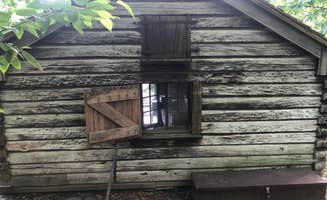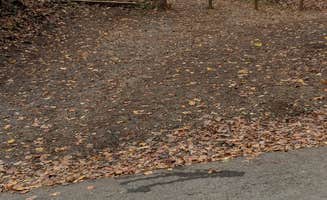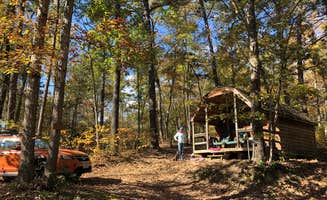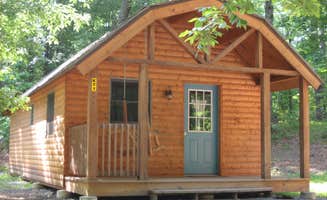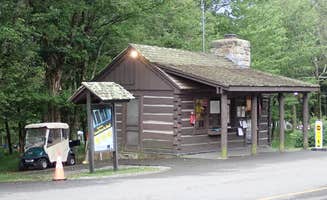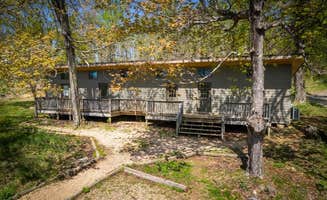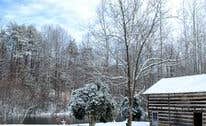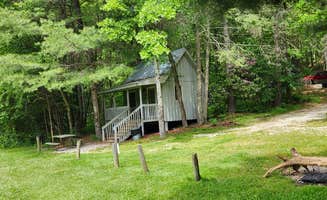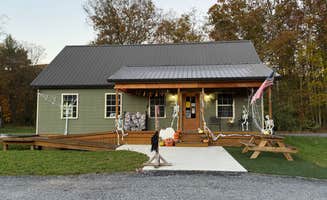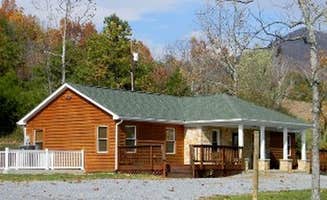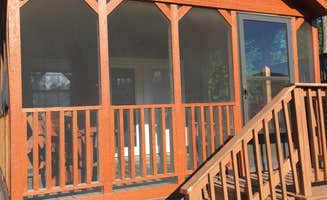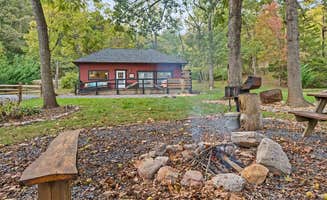Cabin camping near Grottoes, Virginia offers shelter options along the eastern slope of the Blue Ridge Mountains at elevations between 1,000-3,500 feet. The region experiences significant temperature variations with mountain locations averaging 10-15°F cooler than valley floors. During fall leaf season (mid-October through early November), cabin reservations typically require 3-6 month advance booking due to high demand.
What to do
Hiking to waterfalls: 4 miles from Crabtree Falls Campground to access trailhead. The waterfall trail features Virginia's tallest cascading waterfall with a 1,200-foot elevation gain over 1.7 miles. "The falls are a great hike and there are lots of services nearby. A great Parkway stop," notes a visitor. Nearby Appalachian Trail sections connect for extended hiking options.
Mountain biking trails: Extensive network at Stokesville Campground with 4+ miles of flow trails. "Four miles of flow mountain bike trails inside the campground with endless miles of trails just outside. Stokesville is a mountain bike destination that cyclists travel from all around," according to a reviewer. The campground serves as a gateway to the George Washington National Forest trail system.
Riverside activities: Multiple access points from campsites. "Sites are right on the river, we had a walk to which gave us some extra privacy. Beautiful area for hiking, lots leading off of the AT," mentions a camper at Crabtree Falls. Many cabin locations feature direct water access for wading, fishing, and tubing.
What campers like
Wildlife viewing: Early morning deer sightings common near Big Meadows Campground. "We saw many deer and bear while camping. Just being in Shenandoah is a soothing experience. With so many hiking trails and waterfalls nearby we love to camp in Big Meadows - and for the star watching at night," shares a regular visitor.
Creek-side cabin sites: Natural sound barriers provide privacy. "The site backed up to a creek that created natural flowing water that we enjoyed wading through. The bath house was well maintained and super clean," notes a camper at Crabtree Falls Campground. Several locations feature cabins positioned near moving water for both ambiance and privacy.
Firefly displays: Best viewing mid-June through July. "The fireflies are spectacular. At dusk, the ground shimmers, and then after they disperse, you will still see them flit by the tent throughout the night," reports a visitor at Loft Mountain Campground. Peak viewing typically occurs between 9-11 PM on clear, warm nights.
What you should know
Seasonal operations: Most cabin facilities close during winter months. At Loft Mountain, "The campground has a common amenities - a firepit, a bench, and a picnic table. Our site was definitely spacious," but is only open "mid May to late October." Off-season options remain limited to year-round operations.
Bathroom considerations: Facilities vary significantly between locations. "Bathrooms were adequate and just over a 5 minute walk," mentions one Loft Mountain camper. Another notes that "The shower was about 0.3 miles away. They charge $5 for 10 min, which you have to pay in quarters."
Wildlife precautions: Bear activity requires proper food storage. "Bear box for food storage. Loved seeing the deer so close and other wildlife," reports a Misty Mountain Camp Resort visitor. Many locations provide bear-proof storage containers, and all require food to be secured overnight.
Tips for camping with families
Activity planning: Multiple recreation options available on-site. "Misty Mountain Camp Resort is located in Crozet, Virginia, off of 250 below Afton Mountain. Great accommodations... friendly staff, accommodating, pet friendly dog parks, bathhouse, laundry, sun, and shade," according to a recent visitor.
Playground access: Several campgrounds maintain kid-focused recreation areas. At Shenandoah Valley Campground, "They had an awesome pool that was heated, hot tubs, mini golf and good playgrounds. My kids were in heaven," shares a family visitor. Most locations with playgrounds place them within walking distance of cabin accommodations.
Wildlife education: Ranger programs available during peak season. "Nice amphitheater with interesting ranger programs. Busy traffic in park but nice trails are accessible from campground," explains a Big Meadows visitor. Programs typically run nightly during summer between 7-8:30 PM.
Tips from RVers
Site selection: Cabin locations vary in privacy levels. At Walnut Hills Campground, a visitor notes: "Our site 33 was full hookup and a very nice, mostly level, spacious, and had a covered picnic table on a deck. Not all sites have full hookup." Cabins with dedicated patios or decks typically cost $10-15 more per night than standard units.
Utility considerations: Cabin hookups differ from traditional campsites. "The bathhouse is nice as is the pool. The store was sparse but adequate. The lawns were kept up and looking good," mentions a reviewer of Walnut Hills Campground. Most cabin units provide at least basic electricity, but water access may require outdoor spigots.
Parking arrangements: Some locations require walking to cabin units. "A lot of gravel with a few green patches on their sites," notes a camper at Sun Retreats Shenandoah Valley. Parking distances from cabins vary from immediate access to up to 100 yards at some walk-in locations.


